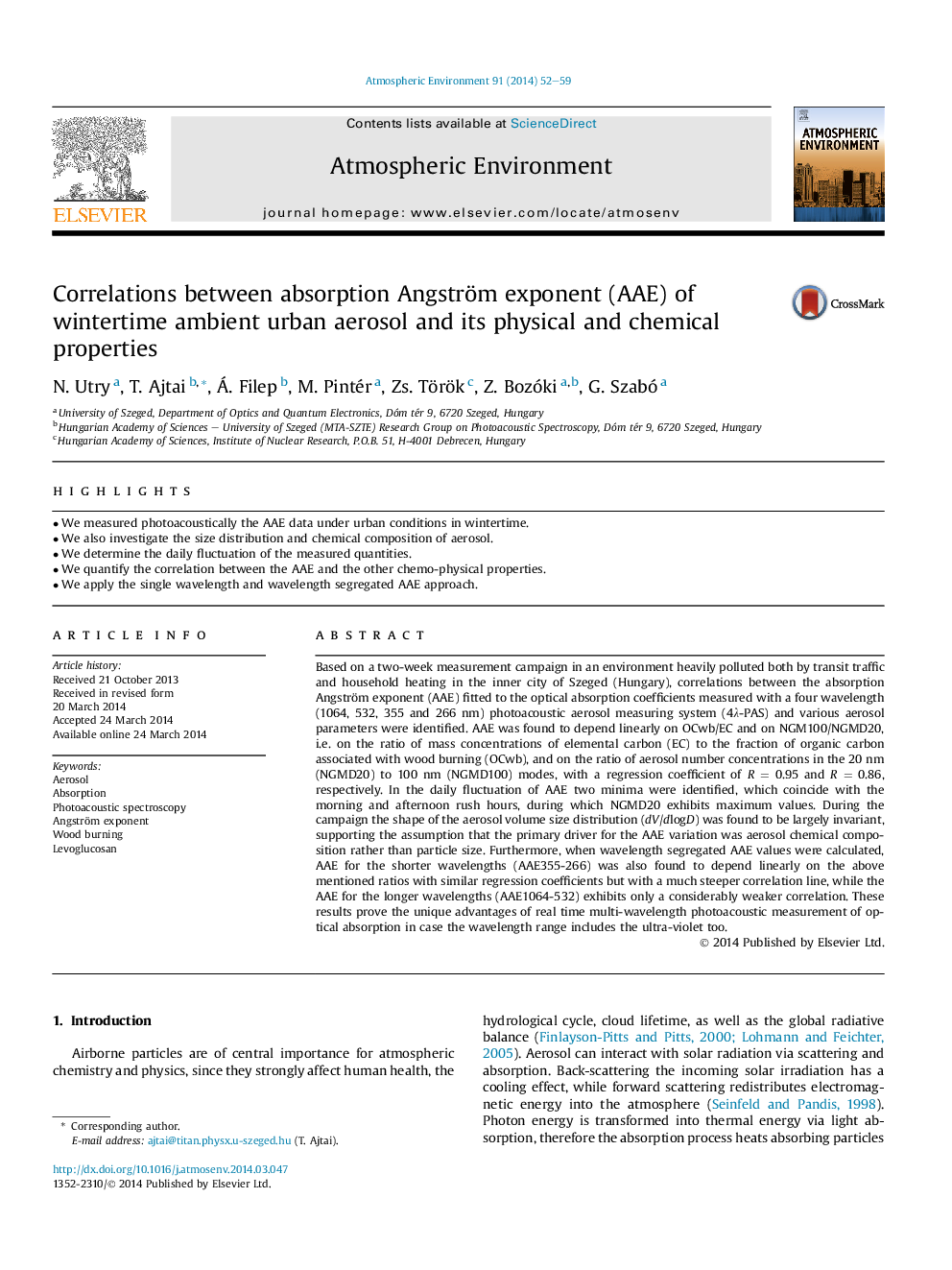| Article ID | Journal | Published Year | Pages | File Type |
|---|---|---|---|---|
| 6339454 | Atmospheric Environment | 2014 | 8 Pages |
Abstract
Based on a two-week measurement campaign in an environment heavily polluted both by transit traffic and household heating in the inner city of Szeged (Hungary), correlations between the absorption Angström exponent (AAE) fitted to the optical absorption coefficients measured with a four wavelength (1064, 532, 355 and 266 nm) photoacoustic aerosol measuring system (4λ-PAS) and various aerosol parameters were identified. AAE was found to depend linearly on OCwb/EC and on NGM100/NGMD20, i.e. on the ratio of mass concentrations of elemental carbon (EC) to the fraction of organic carbon associated with wood burning (OCwb), and on the ratio of aerosol number concentrations in the 20 nm (NGMD20) to 100 nm (NGMD100) modes, with a regression coefficient of R = 0.95 and R = 0.86, respectively. In the daily fluctuation of AAE two minima were identified, which coincide with the morning and afternoon rush hours, during which NGMD20 exhibits maximum values. During the campaign the shape of the aerosol volume size distribution (dV/dlogD) was found to be largely invariant, supporting the assumption that the primary driver for the AAE variation was aerosol chemical composition rather than particle size. Furthermore, when wavelength segregated AAE values were calculated, AAE for the shorter wavelengths (AAE355-266) was also found to depend linearly on the above mentioned ratios with similar regression coefficients but with a much steeper correlation line, while the AAE for the longer wavelengths (AAE1064-532) exhibits only a considerably weaker correlation. These results prove the unique advantages of real time multi-wavelength photoacoustic measurement of optical absorption in case the wavelength range includes the ultra-violet too.
Related Topics
Physical Sciences and Engineering
Earth and Planetary Sciences
Atmospheric Science
Authors
N. Utry, T. Ajtai, Á. Filep, M. Pintér, Zs. Török, Z. Bozóki, G. Szabó,
